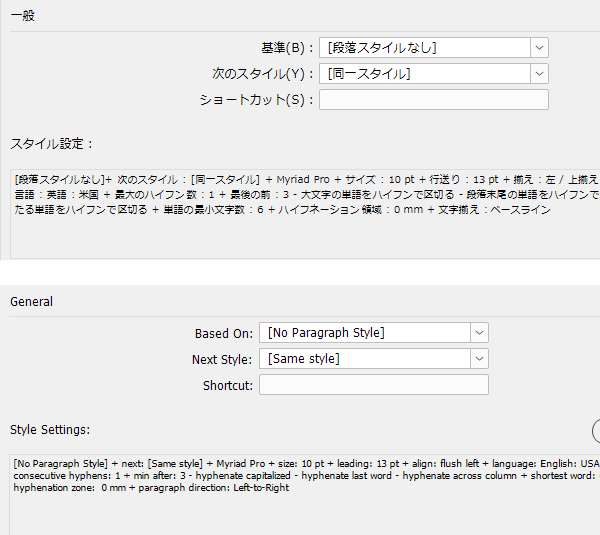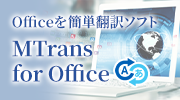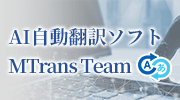
In recent years, the use of AI translation to translate technical documents from Japanese to English has been increasing.
AI translation is convenient and highly accurate, allowing work to proceed more efficiently than traditional machine translation.
However, when translating technical documents and technical materials from Japanese to English, some precautions are necessary.
Japanese technical documents tend to omit subjects and objects due to an emphasis on "conciseness."
As a result, AI translation may miss necessary information or add content that does not fit the context.
Also, if AI cannot correctly understand the type or background of the document, the meaning in English may become ambiguous or the expressions may not match the context.
This article explains two common issues in AI translation—"misinterpretation due to omissions" and "lack of contextual understanding"—with examples, and introduces key points to achieve natural and accurate English translations.
Related Articles
>ChatGPT and DeepL ①: Comparison of Japanese-English Translation Accuracy in Manufacturing and IT Fields
>ChatGPT and DeepL ②: Comparison of Japanese-English Translation Accuracy in Manufacturing and IT Fields — Does Translation Improve with "Instructions"? Thorough Examination of Accuracy Comparison and Improvement Methods
>Smooth Multilingual Deployment! 5 Key Points for English Translation in Manufacturing and IT
- Table of Contents
1. Pitfalls in English Translation Caused by Omissions in Technical Documents
In Japanese technical documents, the subject or object is often omitted in the pursuit of conciseness. If such text is directly translated by AI, the meaning in English can become ambiguous or, in some cases, unintelligible, which may lead to misunderstandings or operational errors.
AI translation is superior to conventional machine translation in that it supplements meaning by referring to the surrounding context and other segments, making the text more natural. However, if the omitted elements are ambiguous or the sentence structure itself is complex, it may incorrectly supplement the meaning, resulting in unnatural or inaccurate English translations.
Here, using actual examples, we introduce unclear parts in AI translation and how to improve them from the perspective of post-editing.
* The example translations use ChatGPT (GPT-5).
Example 1
| Source | Loading while in the yellow (locked) state may cause equipment damage. |
|---|---|
| AI Translation | Loading while the indicator is yellow (locked) may cause damage to the equipment. |
| Post-editing Results | Loading the SE module while the status indicator is yellow (locked state) may cause equipment damage. |
Post-Editing Points:
1. Since the original text omitted "what is being loaded," the AI translation only rendered it as "Loading," making the subject unclear. The intention was supplemented by explicitly stating "SE module." (Of course, if multiple sentences are translated together by AI and the preceding part of the target sentence contains references to the "SE module," the AI might correctly interpret the context and appropriately supply "SE module." )
2. The AI translation inferred and supplemented "indicator," but the correct term is "status indicator" (status light), so the expression was corrected accordingly. Nevertheless, the AI translation's ability to supplement "the indicator" from the context despite the omission demonstrates its excellent inferential capability.
Example 2
| Source | Make sure the circuit breaker on the equipment is turned off before performing this procedure. |
|---|---|
| AI Translation | Equipment status: Make sure the circuit breaker is turned OFF before starting. |
| Post-editing Results | Make sure the circuit breaker on the equipment is turned off before performing this procedure. |
Post-editing Points:
・The original phrase "Equipment status: breaker OFF," which uses a colon as a site-specific shorthand, is somewhat understandable if translated literally but sounds unnatural in English. In the post-edit, the original instruction was accurately expressed as "Make sure the equipment’s circuit breaker is turned OFF."
The AI translation's phrase "before starting the equipment" misunderstands "please start" as the activation of the equipment. In reality, it means "before starting the relevant procedure," so it was corrected to "before performing this procedure."
2. AI’s Weakness in Understanding "Context"
AI translation excels at literal processing but has limitations when it comes to judgment based on context and situation.
The following example shows a case where AI translation translated the original text as is, without understanding the type or purpose of the document.
Although the translation itself is accurate, it is unnatural for actual use in the field and results in expressions that are difficult for readers to understand.
Specific Example (Document Type: Checklist for Store Staff)
| Source |
Check that products are displayed in the correct category and on the correct shelf. Check that there are no errors or misplacements in price tags and labels. Check that products are not creased and are properly hung on hangers. Check that sale items, new products, and promotional items are displayed correctly. Check that there are no stockouts or missing items. Check that products are free from dirt and damage. |
|---|---|
| AI Translation |
Check that products are displayed in the correct category and on the correct shelf. Check that price tags and labels are correct and properly placed. Check that products are properly folded and hung without disarray. Check that sale items, new products, or promotional items are displayed correctly. Check that no items are out of stock or missing. Check that products are free from dirt and damage. |
| Post-editing Results |
Ensure that products are displayed in the correct category and on the correct shelf. Ensure that price tags and labels are correct and properly placed. Ensure that products are properly folded and hung without disarray. Ensure that sale items, new products, and promotional items are displayed correctly. Ensure that no items are out of stock or missing. Ensure that products are free from dirt and damage. |
Post-Editing Points:
Since the original text ends with a question form using "~nai ka", the AI translation is also in question form.
However, because this expression is used in materials such as checklists for store staff, it is more natural to use the "Check that..." format rather than a question form. (※ When translating such checklist texts with AI, instructing beforehand to "translate using the 'Check that' construction as a checklist text" can greatly reduce the post-editing effort.)
Also, in some cases, such interrogative instructions can cause misunderstandings.
For example, if there is a checklist item like "Is the store door closed?", it can cause confusion because the correct state is not clearly indicated—whether "Yes (closed)" means OK or "No (open)" means it should be closed.
Therefore, in English checklists, it is generally recommended to use expressions that clearly indicate the desired state and give instructions, such as "Check that..." or "Ensure that...".
3. Summary
AI translation is a convenient and efficient tool, but when technical documents are translated directly from Japanese to English, issues like those mentioned above can arise.
Although advances in AI technology have greatly improved translation quality, there are still many challenges that need to be addressed through post-editing, and it is important to be careful not to publish translations without thoroughly checking both the language and content aspects.
Human Science offers manual translation services and post-editing services. We are a translation company handling a wide range of fields including software, manufacturing, IT, automotive, and distribution. Since 1994, we have been assisting many companies with their translation needs over a long period. If you have any of the following concerns, please feel free to contact us.
・Translation takes too much time!
・Poor quality leads to many complaints!
・Translation costs are too high!
・Many problems caused by Japanese manuals!
・Unfamiliar with overseas laws and standards!
Related Services
>Translation Services
>Post-Editing Agency & Operation Support Services
>Machine Translation & Automatic Translation


























